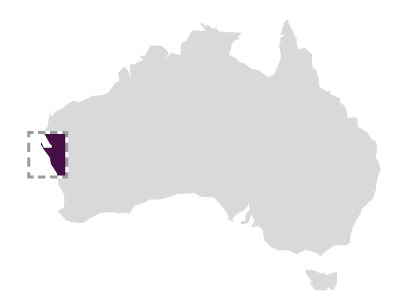Stefano (1875/10/27)
Point Cloates

SRO 23/412 11 May 1876 brig Alexandra reported meeting cutter Jessy 27 April 4 miles N of Cape Inscription. Jessy reported having 2 survivors of brig Stefano. Description of Alexandra visiting site mistaking a rock for the wreck, meets up with apparently unfriendly natives. Description of Walcotts start to investigate site in vessel Victoria
Stefano
From a social perspective the wooden-hulled three-masted 857-ton Austro-Hungarian barque Stefano (1873-1876) is one of the most significant of all the colonial-era wrecks in Western Australia.
After loading 1300 tons of coal at Cardiff in Wales Stefano left for Hong Kong at the end of July 1875 with 17 crew, the eldest at 25-years-old, was the ship’s master. All were from Croatia, bar an English boy. Whilst sailing at an estimated 9 knots the ship struck the Ningaloo Reef south of Point Cloates, on 26 October and in the ensuing storm seven were drowned. The others made it to shore, clinging to wreckage or on upturned boats, thus commencing a saga that was to become one of the greatest shipwreck survival stories for two of them—Miho Baccich, who was then 16 years old and Ivan Jurich, who was 20.
After landing the survivors eventually headed south for the Gascoyne River with the assistance of Aborigines who, though not able to be understood, provided a map that had washed ashore, food and water. On reaching Cape Cuvier they were presented with a vision of extremely desolate country and blinding reflections from the salt lakes. With very little water remaining they turned back only to have a cyclone hit the camp. In becoming totally disoriented, exhausted and separated all Baccich and Jurich died. With no hope remaining, the two survivors headed inland and found the Aborigines who had earlier assisted them. Nursed back to health, on occasions even carried by the women until their strength returned, for three months the boys were assimilated into the group, learning a great deal about the land, the animals, the customs, ceremonies and language. On 18 April they were picked up by the pearler Charles Tuckey in the cutter Jessie. He took them down to Fremantle where they were feted before heading back north with gifts for their saviours. Later they were repatriated to Rijeka where they provided their story to Father Stefano Skurla who had been commissioned by Baccich’s parents to record the story. They also commissioned a painting showing Tuckey rowing ashore from the Jessie towards the assembled group. This painting still hangs in the church of Our Lady of Mercy in Dubrovnik.
Using visual tow search methods, the Stefano was found by a museum team in 1997 and a number of objects including a bell and a starboard lamp were recovered. These now feature in an exhibition entitled ‘Strangers on the Shore’ celebrating the generosity of the Aboriginal people.
References
Honniball, J.H.M., 1961, ‘The Tuckeys of Mandurah’, in Early Days, Journal and Proceedings of the Royal Western Australian Historical Society, Vol 5, Part 8. 1961.
Smoje, N. 1978, ‘Shipwrecked on the North-West Coast: The Ordeal of the Survivors of the Stefano’, in Early Days, Journal and Proceedings of the Royal Western Australian Historical Society, Volume 8, Part 2.
Ship Built
Owner Nikola Bacic and Co.
Master Captain Vlaho Miloslavic (Milosavljevic)
Builder G. Brazzoduro
Country Built Yugoslavia
Port Built Port Fiume (Rijeka) Susak
Port Registered Port Fiume, Croatia
When Built 1873
Ship Lost
Grouped Region Mid-West
Crew 17
Deaths 10
When Lost 1875/10/27
Where Lost Point Cloates
Latitude -22.8268833333
Longitude 113.7211833333
Position Information GPS 2004
Port From Cardiff
Port To Hong Kong
Cargo Coal
Ship Details
Engine N
Length 51.90
Beam 10.00
TONA 858.00
Draft 6.30
Museum Reference
Unique Number 527
Sunk Code Wrecked and sunk
File Number 2009/0008/SG _MA-117/91
Chart Number 330, 72, AUS 745
Protected Protected Federal
Found Y
Inspected Y
Date Inspected 2004/04
Confidential NO